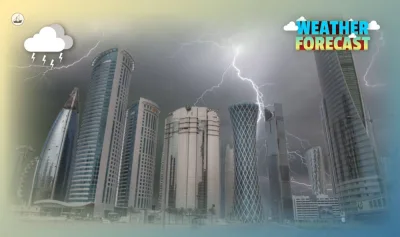The newly published research, by British Meteorology (Met) Office scientists, used advanced climate modelling to show that extreme weather events could devastate food production if they occurred in several key areas at the same time.
Such an outcome could trigger widespread famine.
The scientists, led by Chris Kent, of the Met Office, focused their initial efforts on how extreme weather would affect maize, one of the world’s most widely grown crops.
Heat and drought were the prime risks, although flooding was also included in the analysis.
The group found there is a 6% chance every decade that a simultaneous failure in maize production could occur in China and the US - the world’s main growers - which would result in widespread misery, particularly in Africa and south Asia, where maize is consumed directly as food.
“The impact would be felt at a global scale”, Kent told. “This is the first time we have been able to quantify the risk. It hasn’t been observed in the last 30 years, but the indications are that it is possible in the current climate”. An example of the kind of disaster that could occur is provided by the maize harvests that failed last year in Africa.
Communities in Zambia, Congo, Zimbabwe, Mozambique and Madagascar were affected and 6mn people were left on the brink of starvation.
A joint failure of China and America’s maize harvest would have a far greater impact.
Having studied the risks facing maize production, the group is now following up this work by studying climate impacts on the world’s other staple crops - in particular rice, wheat and soya beans - in order to assess how weather extremes could affect their production.
According to the UN Food and Agriculture Organisation (FAO), maize, rice and wheat together make up 51% of the world’s calorie intake.
Billions of people rely on these crops for survival.
Any disruption to their production would have calamitous consequences.
North Korea is facing severe food shortages after being hit by its worst drought in more than 15 years, the UN said, calling for urgent food imports to stop children going hungry.
Shanghai sweltered under a new record high of 40.9C (105 F) on Friday, authorities said as they issued a weather “red alert” over a stubborn heatwave that has plagued much of the country.
Many parts of New Zealand’s South Island have been inundated by floods after a winter storm dumped more than twice of the average July rain within 24 hours.
As the world has warmed, that warming has triggered many other changes to the Earth’s climate. Changes in extreme weather and climate events, such as heatwaves and droughts, are the primary way that most people experience climate change. Human-induced climate change has already increased the number and strength of some of these extreme events.
Over the last 50 years, much of the US has seen increases in prolonged periods of excessively high temperatures, heavy downpours, and in some regions, severe floods and droughts.



